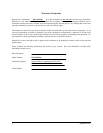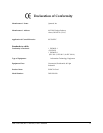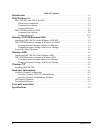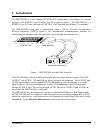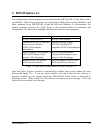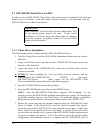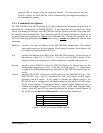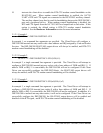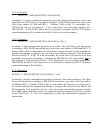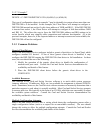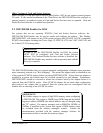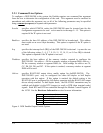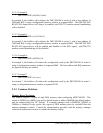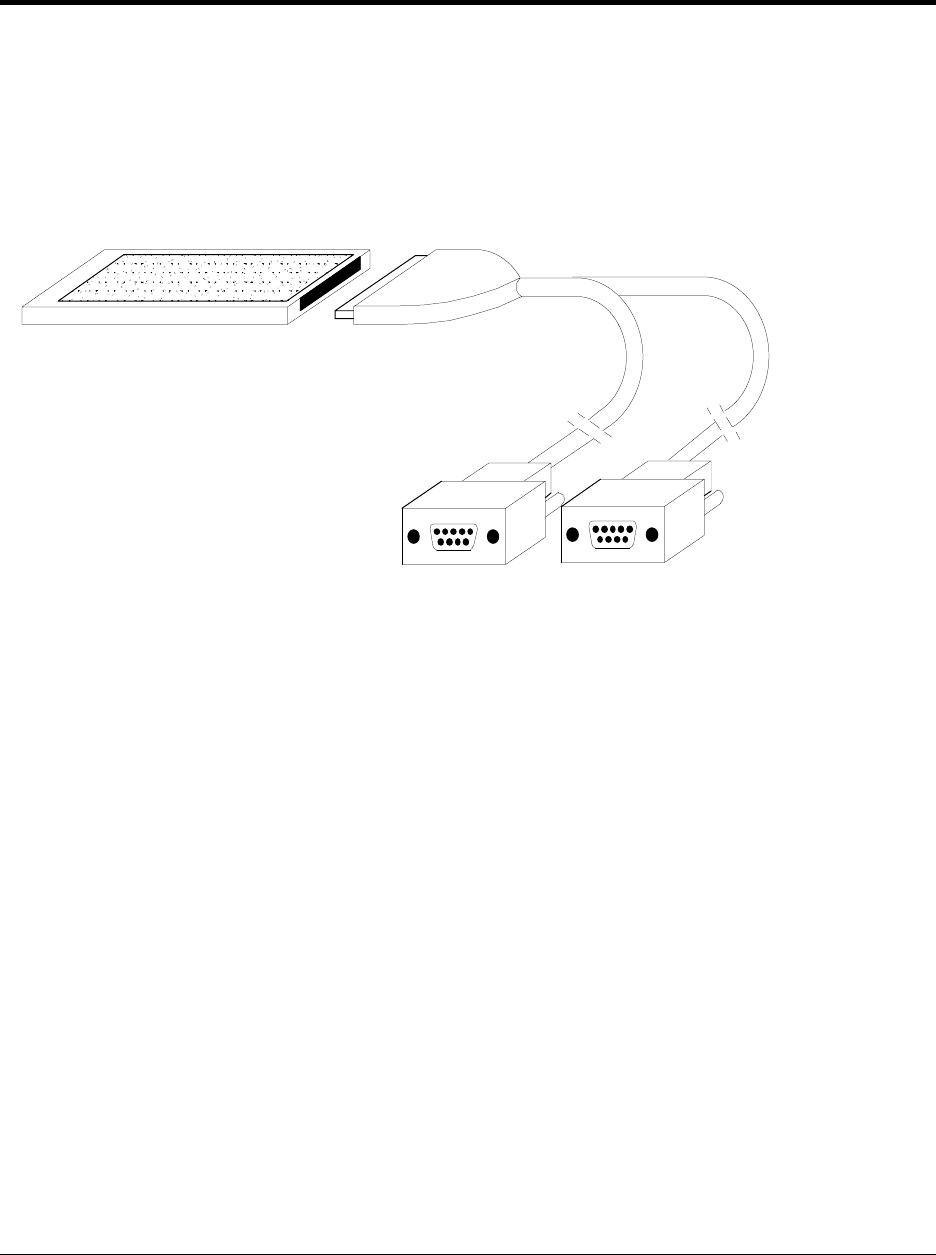
1. Introduction
The DSP-200/300 is a dual channel RS-422/RS-485 asynchronous serial adapter for systems
equipped with PCMCIA Type II and/or Type III expansion sockets. The DSP-200/300 is a
PCMCIA Type II (5 mm) card and is PCMCIA PC Card Standard Specification 2.1 compliant.
The DSP-200/300's serial port is implemented using a 16C750 Universal Asynchronous
Receiver/Transmitter (UART), which is the recommended communications interface for
multitasking environments and with applications involving high data transfer rates.
PCMCIA Card Cable Assembly
Standard D-9 Female (2)
Figure 1. DSP-200/300 Card and Cable Assembly
The DSP-200/300provides four differential signal pairs (two input and two output): TxD, RxD,
AUXOUT, and AUXIN. TxD and RxD are always present at the connector. The AUXOUT and
AUXIN signals can be used to support RTS/CTS handshaking, external clocking, or external
signal loopback. The default configuration is RTS/CTS handshaking, with RTS transmitted
through AUXOUT and CTS received through AUXIN. The role of AUXOUT and AUXIN can
be set when the DSP-200/300 is configured.
The DSP-200/300 may be configured to operate in either the Full Duplex or Half Duplex mode;
the DSP-200/300 may be configured so that the output drivers are always enabled, RTS or DTR
enable the output drivers, or the output drivers are automatically enabled only when data is being
transmitted. See the Hardware Information section for details on these topics.
Introduction 1-1




